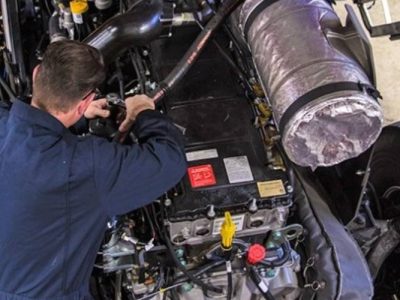Any vehicle’s tires are an essential part that affects performance, safety, and fuel economy. But a lot of drivers don’t realize how important routine tire care is, especially tire rotation. The process of routinely shifting each tire’s location on the car is known as tire rotation, and it may have a big influence on both tire life and overall driving comfort. Car owners may preserve their investment and guarantee safer trips by knowing why tire rotation is crucial.
The Fundamentals of Tire Wear
Different driving conditions and the tire’s location on the vehicle affect how quickly tires deteriorate. Particularly in front-wheel drive cars, the front tires usually experience more wear than the rear tires. The primary cause of this disparity is that most steering, braking, and accelerating forces are applied to the front tires. Uneven wear patterns may also be caused by other elements including driving style, alignment, and tire pressure. Regular tire rotation is essential because uneven tire wear may cause decreased traction and an increased risk of blowouts if left unchecked.
Encouragement of Even Wear
Encouraging equal wear on all four tires is one of the main goals of tire rotation. Drivers may lessen the wear disparities that naturally arise from the tires’ different duties by methodically shifting where they are located. Tire rotation is advised every 5,000 to 8,000 miles (or every oil change) according to the majority of tire rotation regimens. Choosing the Auto Repair in Columbia, SC is the best there. By allowing each tire to degrade uniformly, this technique greatly increases the lifetime and preserves peak performance of the tires. Tire replacements prematurely may result from vehicles that do not have regular tire rotations, since the tires may only reach a portion of their maximum life.
The Benefits of Tire Rotation Mechanically
In addition to extending tire life, regular tire rotation preserves a car’s alignment and handling qualities. Uneven tire wear may cause problems including misalignment, longer stopping distances, and unstable driving. Vibrations caused by uneven wear might potentially lead to further damage to other elements of the car. Furthermore, equal tread depth helps with braking and traction, both of which are critical for safety in bad weather. To put it briefly, correct tire rotation preserves the vehicle’s general driveability as well as the structural integrity of the tires.
Improving Fuel Economy
Fuel economy may be severely impacted by increased rolling resistance caused by worn or mismatched tires. Uneven tire wear increases the amount of energy needed to move the car, which raises fuel consumption. Vehicle owners may reduce rolling resistance and increase fuel economy with regular tire rotations, which will save them money at the gas pump. Thus, tire rotation functions as an investment with greater financial returns in addition to being a maintenance schedule.








Comments